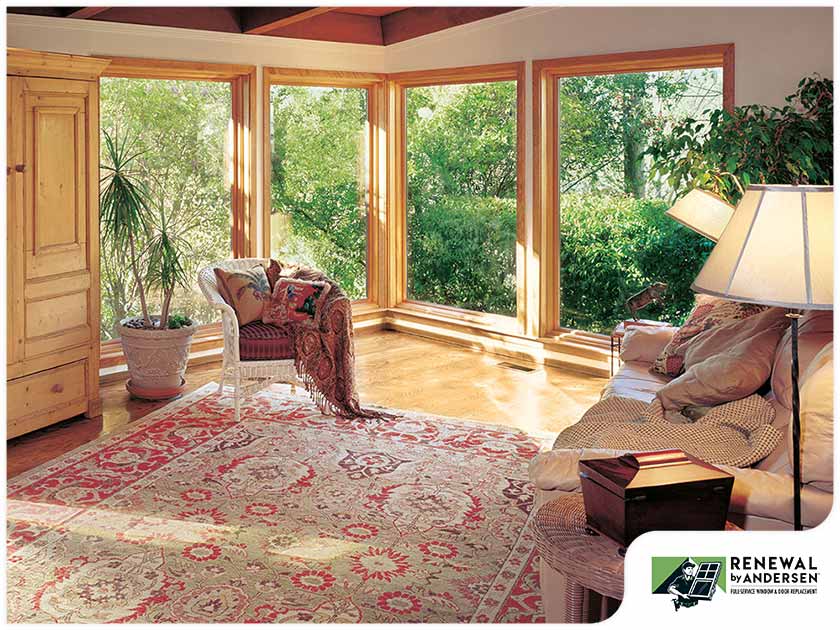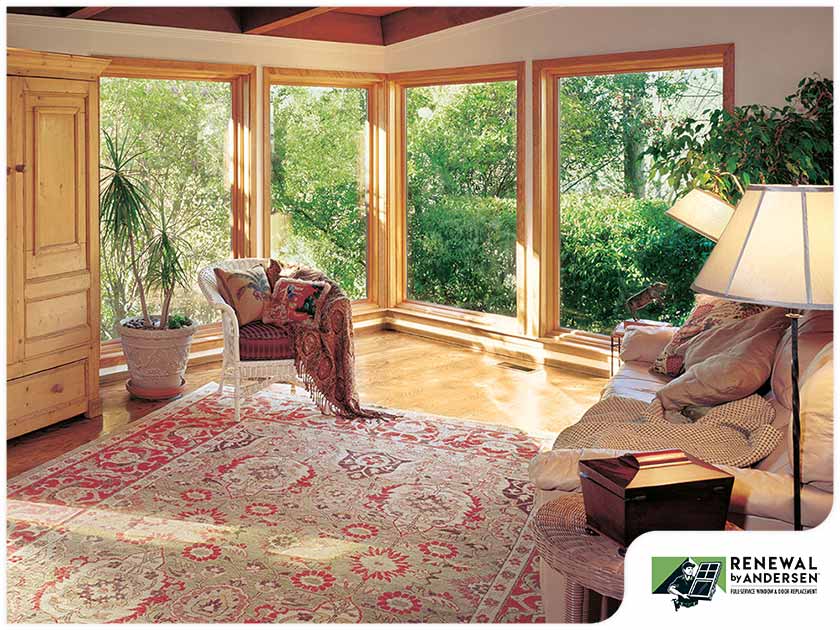You might not think much about your artificial lighting fixtures, but they do play a key role in your home’s interiors. You might even depend on them during the daytime, but if you’re planning to improve your home’s energy efficiency, you should consider making better use of natural light as much as possible. For instance, leaving the curtains or blinds of your casement and double-hung windows open during the daytime allows you to harness more sunlight, lowering your artificial lighting usage effectively. Of course, natural light also offers many other benefits that artificial bulbs can’t simply reproduce.
Why You Should Get More Natural Light
No amount of artificial light can match the natural feeling of sunlight and the rich, full-spectrum hue shining into your home. It’s been scientifically proven to boost serotonin, which is the hormone that stabilizes a person’s mood and well-being. This means you feel calmer and at peace when under natural light, which also helps boost overall productivity.
A home that’s flooded with natural light makes its occupants feel brighter and more cheerful at home. It sets the overall tone of your interiors as well while also keeping your home energy-efficient. And when you depend less on artificial lighting during the day, you also help lower your monthly energy bills.
Making Use of Natural Light
While there are other methods to let more natural light into your home, adding more windows is often one of the most effective. If you’re planning a full window installation project this season, you can consider adding more windows in some areas of your home. But keep in mind that this can’t be easily done, as several factors must be considered to determine how many you can add and which style you should install.
What to Ask When Adding More Natural Light
- “Which areas in your home need natural light?” Not all areas in your home need to have natural light, but the ones that do may not be getting enough to limit using artificial light during the day. Usually, the areas and rooms on the north side of your home will get more consistent sunlight throughout the day. However, almost any area in your home can get adequate sunshine with the right kind of window.
- “Where does the sun rise and set?” Knowing where the sunrise and sunset are where you live is crucial if you want your new windows to harness sunlight efficiently. For instance, some skylights that are installed on sloping roofs that face north tend to provide a soft, diffused light throughout the day. But since they’re not facing east or west, they won’t always be as bright as normal sunlight at certain times of the day.
You should also avoid installing skylights on roofs that face south as they may be liable to overheat rooms. But if this can’t be avoided, they must at least have a gray- or bronze-tinted glass to block the sun’s ultraviolet (UV) rays. This helps block most of the UV rays that may otherwise cause bleaching to your wooden furniture.
- “What are my other options?” Additional double-hung windows don’t have to be the only options in bringing more natural sunlight indoors. While they can still be great for your home, you can also consider other innovative options, such as sun tubes and roof lanterns. Sun tubes, in particular, are ideal for hallways and other smaller spaces in your home. You might even consider adding windows in places that naturally catch the low-angled rays of the sun during winter.
- A roof lantern works similarly to a skylight, but is usually larger and takes up practically the entire ceiling space above your bathroom. Just imagine yourself when showing or taking a nice, long bath. You get to see the floating clouds, blue skies and even the nearby trees with overhanging branches as they already provide a beautiful backdrop to the room. And since the glass area is above your head, there’s no need to worry about privacy. Of course, this is only worth considering if you don’t have any neighboring houses or tall buildings too close to your home.
Tips to Take Advantage of Natural Light
- Add more skylights and bigger windows. Skylights are widely popular for their visual appeal and practical function. They easily provide more consistent natural light since they’re right under the sun, and with the right placement, they’re also less likely to be blocked or shadowed by outdoor objects. Consider these for your hallways if you’re aiming to get more natural light indoors. You can also consider adding a skylight in your kitchen or bathroom if desired, but this will still mainly depend on your home design. For instance, you can consider adding a skylight in your kitchen if it can enhance the interior design during the day instead of artificial lighting. But if this isn’t possible in your home design, you can still consider upgrading to larger double-hung or casement windows as they also provide ease of use in case you need additional ventilation. If you’re already considering a full window replacement this summer, why not upgrade to larger windows in your living room? This can also be done to other similar spaces in your home if you have the wall space for it. You can even consider upgrading to bigger windows in your bathroom, but if you’re concerned about privacy, we suggest installing semi-opaque blinds that let some light through while obscuring visibility. Of course, you should know that you’re also limiting how much natural light can flood indoors.
- Trim overgrown trees and shrubs. Trees and shrubs growing near your windows can easily block the light from shining through your windows if their branches are not trimmed regularly. They can even damage the glass panes with the branches trying to poke through. Even overhanging branches can also block the sunlight from getting in through the skylights, so if you think that they’re already obscuring your view of the outdoors, it’s time to trim them thoroughly.
When it comes to quality window installation, you can always count on Renewal by Andersen® of Cincinnati to get the job done right! Call us at (513) 283-8996, or fill out our convenient contact form to get started! We serve our customers in Ohio, including Cincinnati, West Chester and the neighboring areas.


